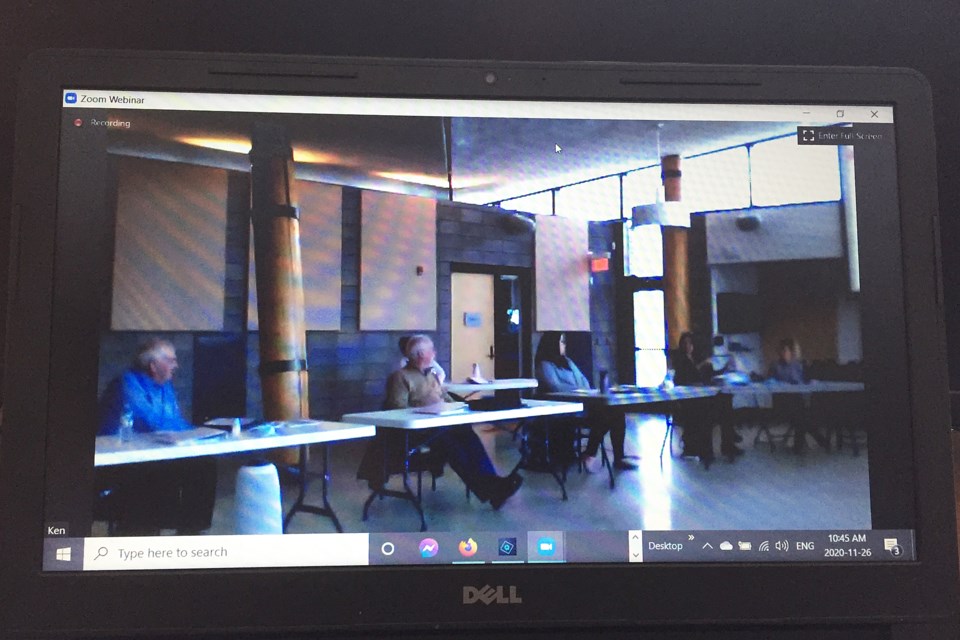INNISFAIL – Town residents and businesses are looking at a zero per cent tax increase for the municipality's first pandemic budget in 2021 but the ongoing and escalating harm caused by COVID-19 is cutting off any sense of joyful accomplishment.
Instead, the mayor is looking ahead with caution before anyone pops the cork in celebration.
“What happens here in the next month or two is going to have some indication, the COVID thing, and you don’t know what is going to come down that chute,” said Town of Innisfail Mayor Jim Romane on Nov. 26 following two and a half days of 2021 budget deliberations at the Innisfail Library/Learning Centre.
"Staff did a great job in trying to get a grip on things. Ideally it has potential for zero but time will tell here when we get to final strokes by February or March."
This year’s first, and hopefully last municipal COVID budget preparations, was spearheaded by Heather Whymark, the town’s director of corporate services. The proposed operational budget is pegged at $21,577,722 while the capital budget is set for $4.7 million. Whymark will formally present this year’s budget to council on Dec. 14, and while acknowledging the intent was to bring council a zero per cent tax increase plan for 2021 it’s not yet written in stone.
“It will all depend on the numbers that come in at mill rate time and council will have the right to make an increase, or if we need to balance the budget or choose to add extra funds,” she said.
A week earlier she offered council a preview to the 2021 capital budget, and none of the $4.7 million worth of items, including big ticket infrastructure items and the $600,000 cost for the CP Rail pedestrian crossing, were touched during budget deliberations from Nov. 24 to 26. “There was not that much debate on that,” said Whymark.
However, tackling the much larger and more complicated operational budget is an entirely different matter, especially so when COVID created a two per cent revenue hole for 2021.
She said right now the assessor has submitted lower assessment of around three per cent on residential properties. Whymark said that resulted in less revenue in the budget to start with by about a $125,000 net loss.
Whymark also noted it’s expected the town’s recreational facilities will not meet full capacity for 2021, making it necessary to lower revenue projections from those areas.
With those losses and decreased revenues in mind, staff was asked to take a hard look at expenses. Whymark asked them to go “minimal” at one per cent.
“It ended up the whole overall budget is lower by four per cent,” she said, noting some departments, including operations, lowered by seven per cent. “That’s huge. They really stepped up to the plate to say, ‘you know what? We can do it at this cost for these amount of dollars.”
The good news is that no big cuts were made for the 2021 budget, and staff levels will remain the same at this time, said Whymark.
“No, just the overall expenses appeared to do that but of course going through another year of COVID we don’t know what that is going to look like but there was not a major cut. It was just evenly cut right across the board,” she said.
However, there will be changes coming to utility user fee rates for sewer, garbage and water. They will be higher but the new rates have not yet been approved and won’t be publicly released until Dec. 14.
“There’s a little increase on water and sewer, small increases,” said Romane. “But every year we get an increase passed down to us from the regional water and sewer systems, and they all look for an extra shot in the arm. We are faced with that.”
Despite the uncertainty caused by the pandemic, Whymark said the budget deliberations went “very smoothly” with members of council.
“They did discuss. They always kept the communications going. They repeated on numerous things to make sure everybody understood why we were doing what we were doing. No, there was great support from them,” she said.
“You have to remember this is their third year now,” she added. “They are experienced when it comes to the budget, and the conversations, timelines and what we talk about. So, in the third year you do expect to go a little faster.”



